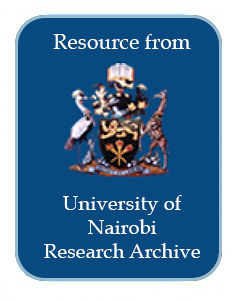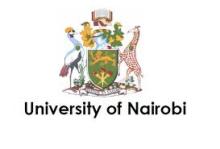Resource information
The impact of land use and cover change on soil quality and pasture production was investigated
in the rangelands of Nakasongola District, Uganda, Landsat (TM) images of 1986 and 1990 and
Landsat (ETM+) of 2000 and 2004 for Nakasongola District were used to determine the extent
and patterns of land use and cover change using the Integrated Land and Water Information
Systems (ILWIS) 3.6 software. A modified-Whittaker sampling design was used to collect soil
and pasture samples in three land cover types (bare, herbaceous and woody) under three
production systems (settled, semi-settled and non-settled). The soil samples were analyzed for
selected chemical and physical properties while pasture samples were oven dried for biomass
yield. Analysis of variance, discriminant analysis and principle component analysis were
conducted using XL-Stat software to differentiate the sites and ascertain the effects of different
land cover and use types on soil properties. Multivariate analysis for 18 properties of soil was
conducted for physical (5), chemical "(7), organic matter (3) and aggregate stability (3) for the
upper 15 ern of soil which were combined into a single general indicator of soil quality (GISQ).
The area covered by grassland decreased by 13.1% from 90,020 ha in 1986 to 78,199 ha in 2004.
Between 1986 and 1990, much of the grasslands were converted into bush land (38,608 ha),
woodland (19,659 ha) and cropland (9,159 ha) while between 1990 and 2000, 21,838, 5,912 and
4,506 ha of grassland were converted to woodland, cropland and bush land respectively and
between 2000 and 2004, 33,354, ha were converted to woodland, 12,029 ha to bush land and
6,114 to crop land. In general, bush and woody encroachment engulfed approximately 65%,50% and 54% of grasslands In the periods of 1986 - 1990, 1990 - 2000 and 2000 - 2004,
respectively.
Soils from bare land under non-settled production systems had significantly high levels of clay
(p
soils from woody vegetation had significantly high levels of available Phosphorus (p < 0.04).
The semi-settled production system had high levels of pH (p < 0.04), Ca (p < 0.038) and CEC (p
< 0.001) compared to the settled and non-settled systems. Basing on chemical and physical ,
properties, soils from herbaceous vegetation were very distinct from those of bare ground but
were 72% similar to soils under woody cover.
When the equation for calculation of the General Indicator of Soil Quality (GISQ) was
developed (GISQ = 0.015PHYSICAL + 0.02CHEMICAL + 0.0170RGANIC MATTER +
0.024AGGREGA TE STABILITY) and applied to all sites, GISQ was significantly affected by
production system (p < 0.05) and the interaction between production system and cover (p <
0.001). Herbaceous cover under semi-settled production systems had the highest GISQ of 0.64
that ranged from 0.41 - 1.00, while bare cover under non-settled systems had the lowest GISQ of
0.23 that ranged from 0.1 - 0.53. Most soils had lower levels of organic matter and soil nutrients
and thus the generally low GISQ.
Pasture biomass yield was significantly different between cover types (p < 0.0001), with high
biomass in herbaceous (2019 kglha) and least in bare. Production systems also had significantly different (p < 0.013) biomass yield, highest in settled (1266 kg/ha) and least in semi-settled (953
kg/ha). Biomass yield was more associated with high levels of OM (r = 0.91), Ca (r = 0.91), Mg
(0.83), N (r = 0.77) and base saturation \r = 0.88) and were therefore identified as the most
critical soil nutrients limiting pasture production.
The results indicated that the rate at which grassland cover is lost to other land use and cover
types is greater than the rate of grassland expansion meaning that grasslands are at the verge of
disappearing if no conservation measures are instituted to protect them. Grasslands have been
degraded to levels below their recuperative capacity and therefore rehabilitation back to
herbaceous cover would require more time and external investments. The soils in Nakasongola
are generally very strongly acidic (average of pH = 4.5) and therefore improving soil pH and
addition of organic matter are major soil management practices that should be undertaken to
increase pasture biomass yield in the degraded rangeland ecosystems. From this study, semisettled
production systems and herbaceous vegetation cover have been identified as the most
appropriate land use and cover types for 'the semi-arid rangelands of Nakasongola District in
terms of sustainable soil quality conservation and pasture production.


